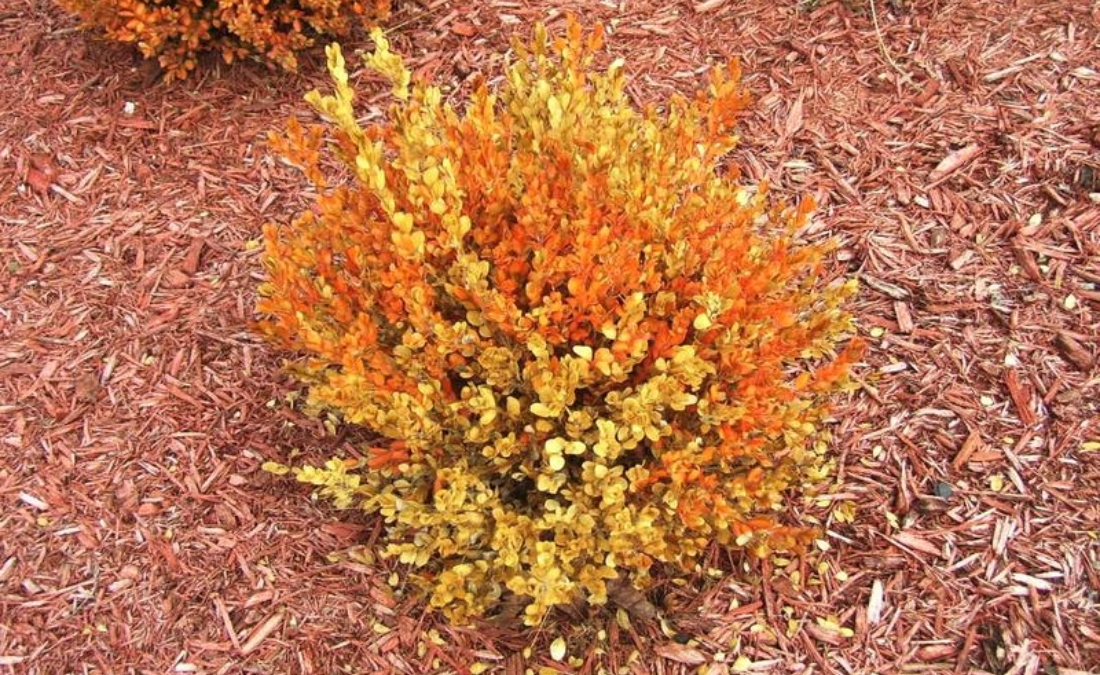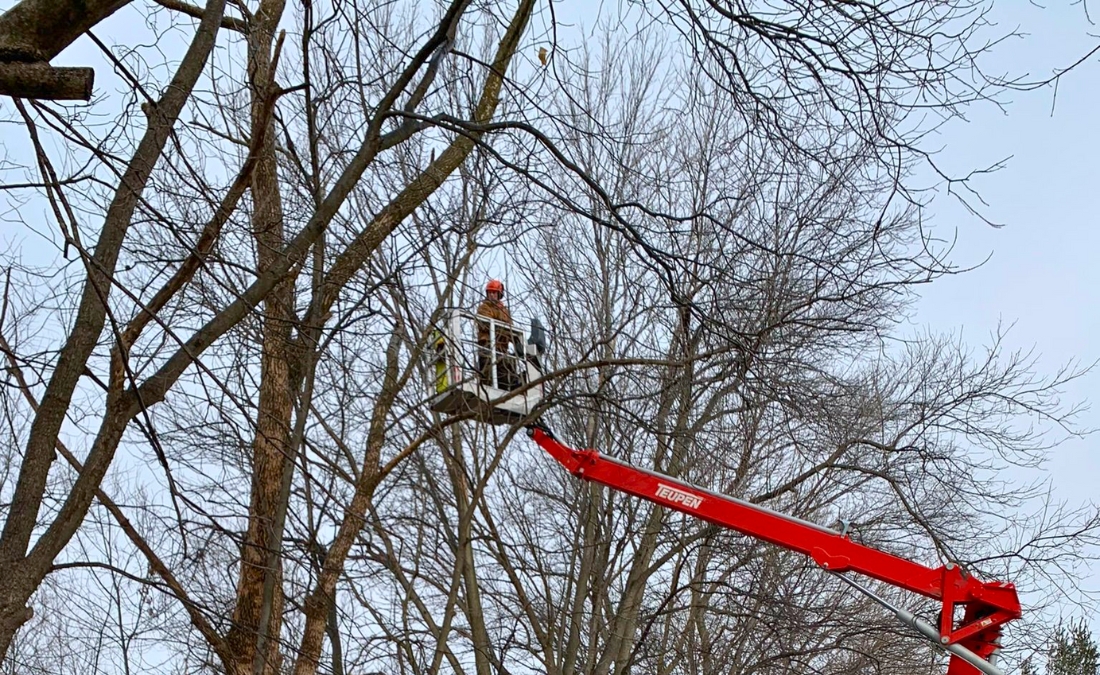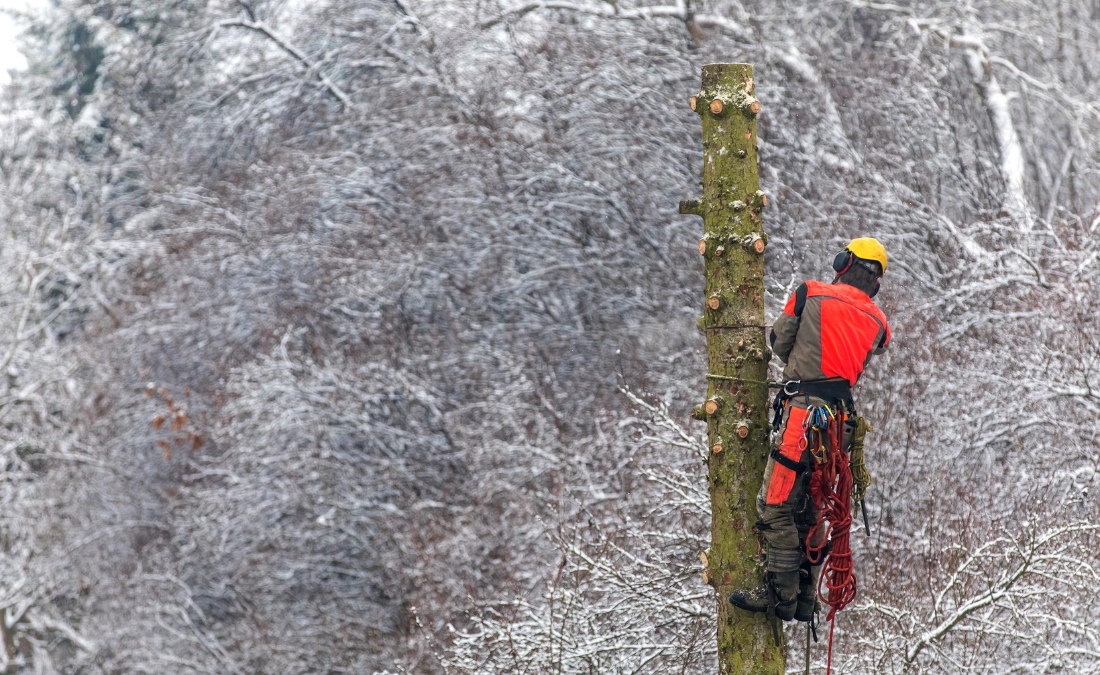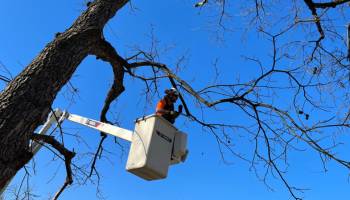Why Fall Tree Planting in Des Moines Creates Thriving Urban Forests
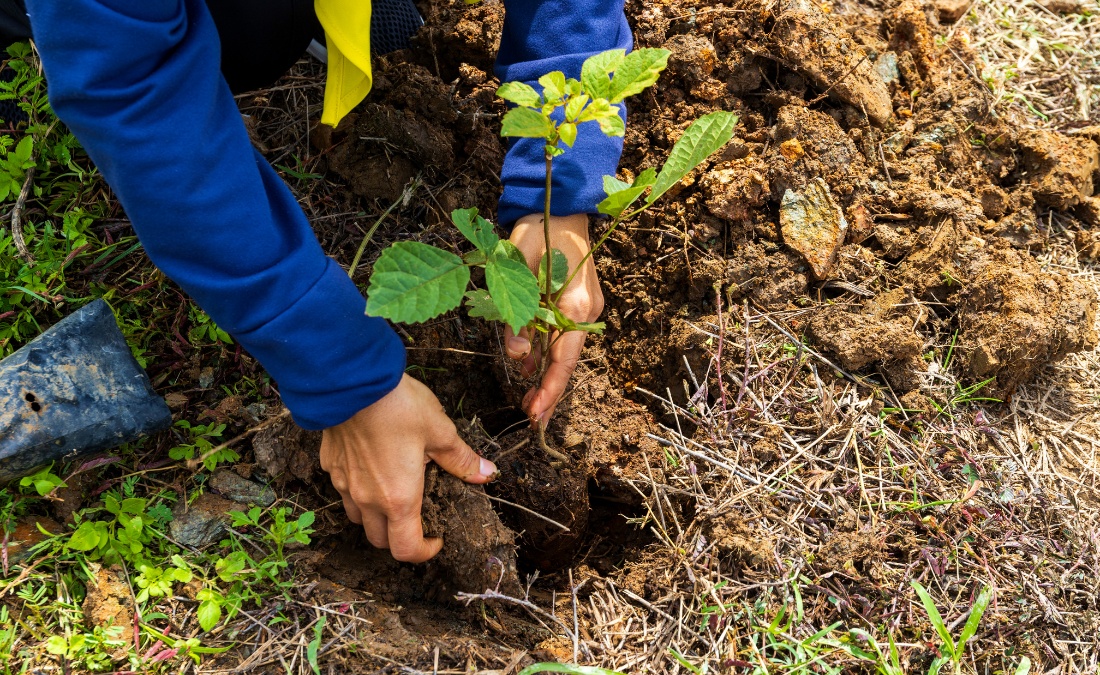
Struggling with clay soil or spring frosts? Fall tree planting in Des Moines offers better soil temps, fewer risks, and lasting growth for your landscape.
Walk through the tree-lined streets of Beaverdale or the other historic neighborhoods of Sherman Hill, and it’s hard to miss the gorgeous fall foliage and unmatched shade of the canopies. But, these established urban forests didn’t happen by accident; they’re the result of strategic planting decisions made decades ago. For homeowners ready to invest in their property’s future, fall tree planting in Des Moines offers the best opportunity to establish healthy, long-lasting additions to our urban canopy.
Despite spring’s reputation as planting season, fall delivers the perfect combination of warm soil temperatures, cooling air, steady rainfall, and months of uninterrupted root development that creates the strongest foundation for tree success in Central Iowa’s challenging climate.
Key Takeaways
- September through November offers the optimal planting window for Des Moines, with soil temperatures staying warm while air temperatures cool, promoting root growth without foliage stress.
- Root establishment occurs through December in Central Iowa, giving fall-planted trees a 4-6 month head start before spring growth demands begin.
- Native species like bur oak, red oak, and sugar maple are perfectly adapted to Des Moines clay soils and should be your first choice for long-term success.
- Final watering before ground freeze is critical for winter survival, typically needed through mid-November in the Des Moines area
- City of Des Moines tree programs, like Tiny Trees and TreeKeepers, complement private planting efforts to build our urban forest diversity.
Why Fall Is the Best Time to Plant Trees in Des Moines
The science behind fall planting success lies in understanding how trees allocate their energy resources. Fall-planted trees can focus entirely on root development rather than splitting energy between root growth and
foliage production that occurs with spring planting. Three key factors explain why fall planting gives trees in Des Moines such a strong start: favorable soil temperatures, fewer spring stressors, and more reliable seasonal moisture.
Optimal Soil Temperature Conditions
Des Moines soil temperatures at the critical 4-inch depth remain above 50°F well into November, while air temperatures cool to comfortable levels for both the tree and the person doing the planting. This temperature differential creates perfect conditions for root establishment. Central Iowa soils typically maintain planting-friendly temperatures through Thanksgiving, giving trees months to establish before winter dormancy.
Fewer Planting Challenges
In spring, trees face:
- Unpredictable late frosts that can damage new growth
- Saturated clay soils from snowmelt that prevent proper planting
- Immediate stress of supporting new leaf growth
- Competition between root development and foliage production
Meanwhile, fall-planted trees avoid these hurdles. With cooler weather and stable soil conditions, they focus solely on root development. By the time spring arrives, those roots are established and ready to support vigorous growth rather than struggling to survive transplant shock.
Natural Weather Advantages
The seasonal rainfall patterns in Central Iowa also favor fall tree establishment. September and October typically provide steady moisture without the intense summer heat stress or the flooding potential of spring storms.
The combination of healthy root development, fewer environmental risks, and natural weather support is why more arborists recommend fall planting. With these advantages in place, your trees enter spring ready to thrive instead of struggling to catch up.
Best Time to Plant Trees in Des Moines During Fall
Knowing the science is one thing, but seeing how it applies month by month, species by species, makes planning your own fall tree planting much easier.
| Month | Timing | Soil Temp. | Advantages | Notes |
|---|---|---|---|---|
| September | September 15th onward | 65-70° F | 8-10 weeks establishment time | Begins when highs drop below 80° F |
| October | Whole month is prime window | 50-60° F | Perfect air/soil temperature balance | Best month overall for Des Moines |
| November | Through Thanksgiving | 45-55° F | Last chance for root development | Continue if soil temps stay above 45° F |
Understanding Des Moines’ specific climate timing ensures your tree planting success. The key factor isn’t calendar dates but soil conditions – tree roots continue growing until soil temperatures drop below 40°F, which typically doesn’t occur in Des Moines until mid-to-late December.
Frost Date Considerations
Des Moines typically experiences its first frost around the beginning to middle of October, but this doesn’t mean you have to stop planting. Light frosts can actually benefit newly planted trees by reducing water stress while soil temperatures remain warm enough for continued root growth.
Species-Specific Timing
Plant evergreens, like white spruce and bald cypress, by mid-September to early October. These species need extra establishment time before winter, as they’re more susceptible to desiccation during Iowa’s variable winter conditions.
PRO TIP: The Iowa State Forest Nursery typically distributes fall orders during the first two weeks of November, making this a popular planting time for native species.
Top Native Tree Species for Fall Planting in Des Moines
Choosing species adapted to Central Iowa’s clay soils and continental climate dramatically improves your tree’s long-term success. The City of Des Moines Forestry Division recommends these proven performers for private property planting:
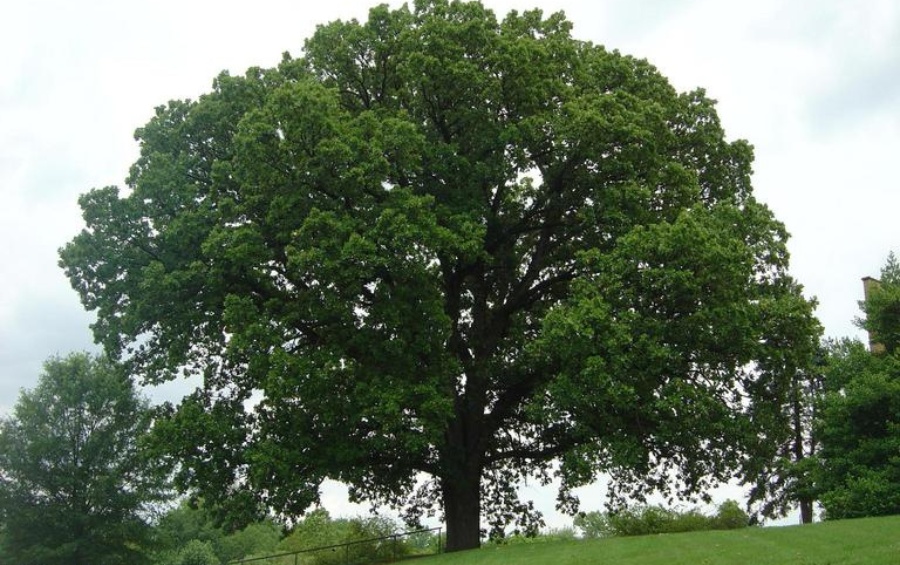
Native oak species like the bur oak can reach 60-80 feet over decades when given proper establishment through fall planting techniques. Photo property of: Jason Sharman, Vitalitree, Bugwood.org
Large Canopy Trees (60+ feet mature)
- Bur Oak (Quercus macrocarpa): The ultimate Des Moines native, perfectly adapted to clay soils and extreme weather. Mature height of 70-80 feet makes it ideal for larger properties in Urbandale or Windsor Heights. These drought-tolerant giants can live 300+ years and provide massive shade coverage. Fall planting allows the extensive taproot system to establish before spring growth.
- Red Oak (Quercus rubra): Faster growing than bur oak while maintaining excellent storm resistance. Reaches 60-75 feet with brilliant fall color that rivals any maple. Particularly well-suited to the slightly elevated areas around Highland Park and Drake neighborhoods where drainage is better.
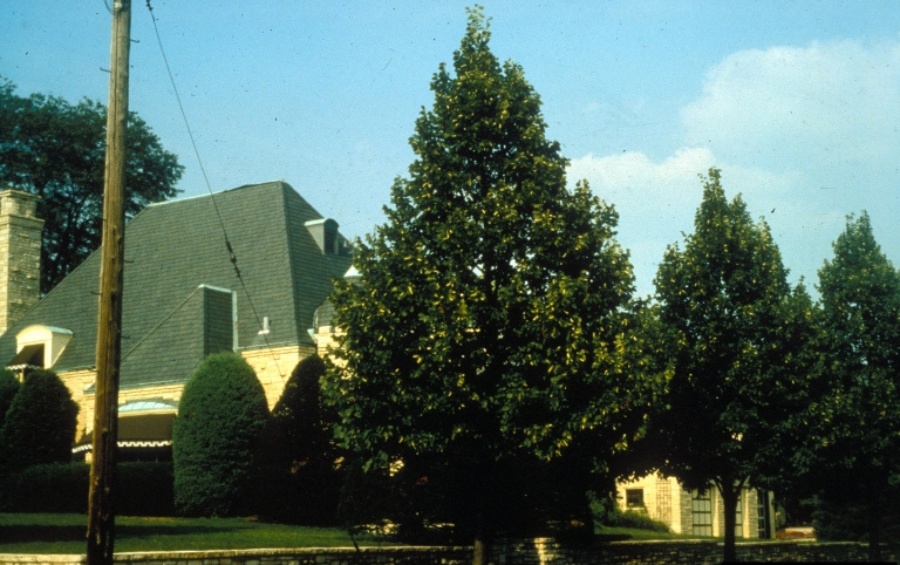
American basswood trees provide excellent medium-sized canopy coverage and are ideal for Des Moines neighborhoods with their heart-shaped foliage. Photo property of: Richard Webb, Bugwood.org
Medium Canopy Trees (40-60 feet mature)
- Sugar Maple (Acer saccharum): The gold standard for fall color, turning brilliant orange and red in October. Moderate growth rate to 60-70 feet makes it perfect for established neighborhoods like Laurelhurst or Greenwood. Prefers slightly acidic soil, so consider soil amendments in Des Moines’ typically alkaline clay.
- American Elm (Ulmus americana): Disease-resistant varieties like ‘Valley Forge’ and ‘New Harmony’ bring back this classic urban tree. Excellent choice for street tree replacement in older neighborhoods. Tolerates compacted clay soils better than most species.
- Basswood/American Linden (Tilia americana): Outstanding choice for pollinators, with fragrant summer flowers that bees love. Moderate size (50-60 feet) works well in compact urban yards. Handles Des Moines clay soils excellently and provides beautiful heart-shaped foliage.
Trees to Avoid Planting in the Fall
- Silver maples (brittle and short-lived)
- Bradford pears (structural problems)
- Most non-native evergreens that struggle with Iowa’s temperature swings
- Fast-growing, weak-wooded species like cottonwood
How to Plant Trees Successfully in Different Des Moines Neighborhoods
While fall planting offers broad advantages across Des Moines, success often comes down to neighborhood-level factors, as historic character, soil type, lot size, and canopy density all influence the best choices for trees and planting techniques.
Historic District Considerations
In communities like Sherman Hill or Beaverdale, it’s important to work with the existing mature canopy when selecting both species and locations. The established neighborhood character calls for traditional choices like American elm or sugar maple. Be mindful of overhead utility lines and narrow lots. Consider smaller mature-size trees, like serviceberry or flowering dogwood, for tight spaces.
Soil-Specific Challenges
Areas with heavy clay content, like Southside, require extra attention to drainage and soil preparation. Create raised planting areas or add coarse sand and organic matter to improve drainage. Bur oak and hackberry excel in these conditions once established. Avoid shallow-rooted species (such as maples) that struggle in compacted clay.
Suburban Opportunities
Take advantage of larger lot sizes in communities like Urbandale to plant canopy trees at proper spacing (40+ feet apart for large species). This western suburb’s newer development patterns allow for strategic placement to maximize energy savings and storm protection. Consider grouping different species for visual interest and biodiversity. The area’s slightly better drainage compared to central Des Moines makes it ideal for a wider variety of native species.
University Area Integration
To complement Drake area neighborhoods and its mix of historic and contemporary architecture, balance mature canopy preservation with new plantings. The proximity to Drake University makes this ideal for native species selection; trees that support local wildlife and provide seasonal interest for students and residents.
In all neighborhoods, respect existing mature trees by planting new additions outside their root zones (typically 1.5 times the canopy width). Coordinate with neighbors when possible to create corridor effects that benefit both properties.
Frequently Asked Questions About Fall Tree Planting in Des Moines
Do I need to stake newly planted trees in fall?
Most trees planted in fall don’t require staking if properly planted with a wide, shallow hole. However, trees planted in windy locations or those with small root balls relative to their canopy may benefit from temporary staking for the first year. Remove stakes after one growing season to prevent girdling.
Should I fertilize trees immediately after fall planting?
No, avoid fertilizing newly planted trees in fall. Fertilizer can stimulate new growth that won’t have time to harden off before winter, making the tree more susceptible to cold damage. Wait until the following spring to begin any fertilization program.
Can I plant trees in Des Moines clay soil without amendments?
While possible, success rates improve dramatically with proper soil preparation. Des Moines clay becomes waterlogged in spring and concrete-hard when dry. Adding coarse sand and compost creates better drainage and root penetration, especially crucial for fall-planted trees that need immediate root establishment.
Which trees should never be planted in fall in Central Iowa?
Avoid tender species not hardy to Zone 5, including:
- Most southern magnolias
- Crape myrtles
- Ornamental fruit trees like peach or cherry
Also skip trees that are marginally hardy, such as bald cypress in exposed locations, and any tree that’s been growing in a southern climate nursery without cold conditioning.
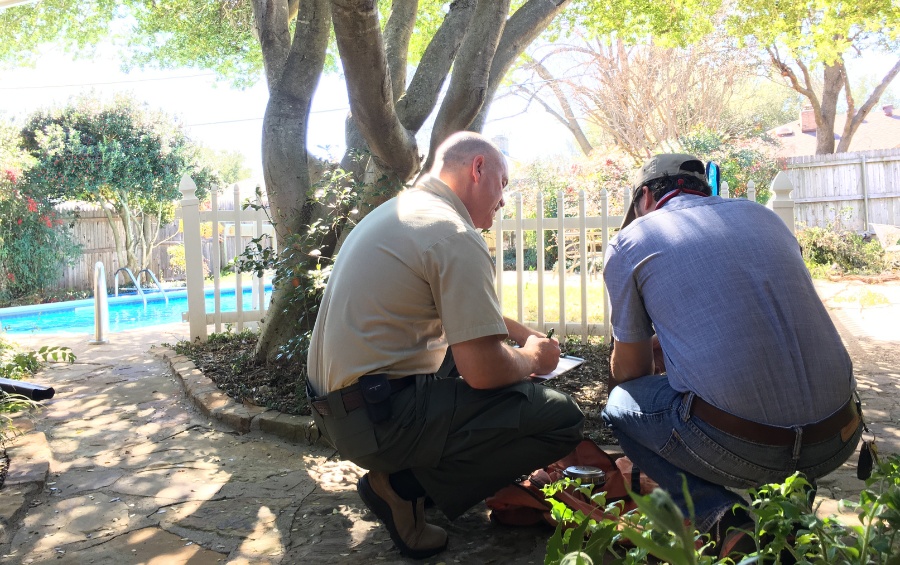
For Professional Fall Tree Planting Tips in Des Moines, Trust Arbor Masters
Fall tree planting offers Des Moines homeowners the best opportunity to establish healthy, long-lasting additions to our urban forest. From species selection to soil preparation, proper timing and technique make the difference between a thriving tree and a struggling survivor.
At Arbor Masters, our ISA Certified Arborists understand the unique challenges of Central Iowa tree establishment. Since 1960, we’ve helped Des Moines families choose and plant the right trees for their specific sites for maximum success. Call us at 515-218-2025 or request your free estimate to discuss your tree planting goals with our team.
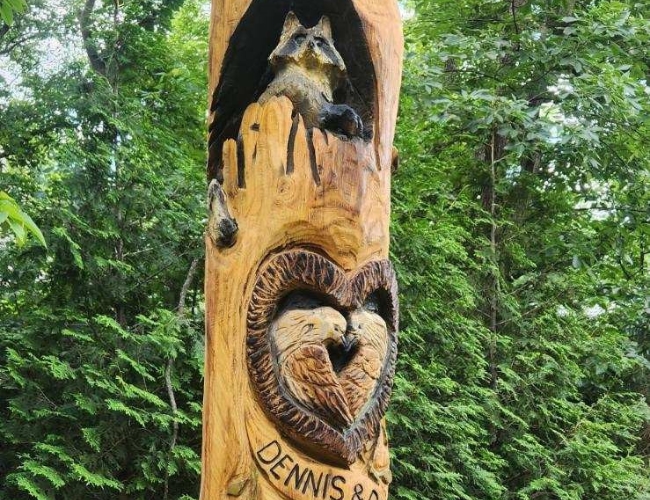
Get the latest local news, tree care tips, special offers, and company updates directly to your inbox! It's easy to subscribe and there's no spam - we promise.
"*" indicates required fields


